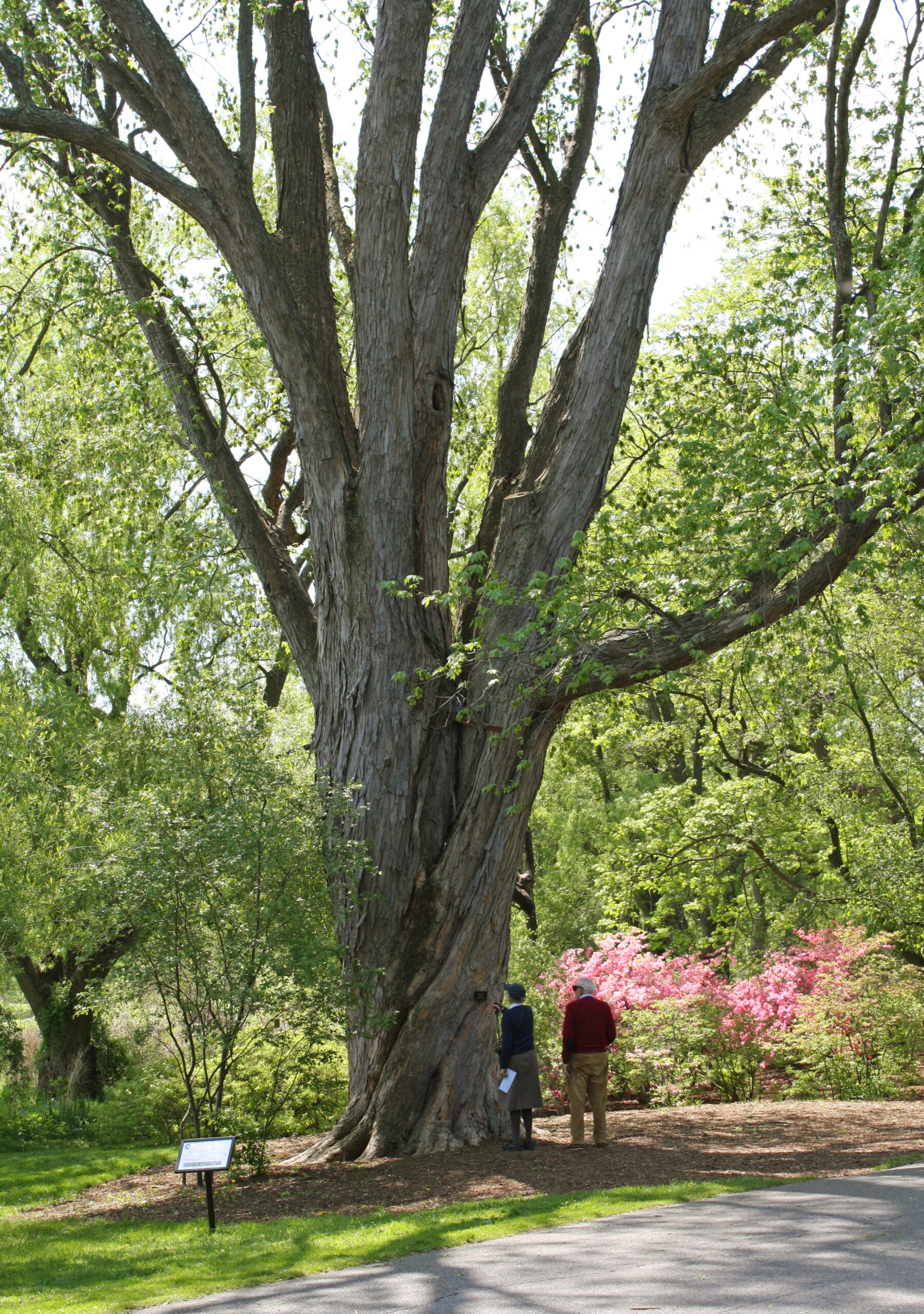The plant collections stewarded at the Arnold Arboretum reflect a continuous cycle of growth, change, and renewal, where each plant contributes its own unique threads to the evolving story of the landscape. Just as the Arboretum adds scores of new plants to the collections each year, a commensurate number of plants are also removed annually, representing plants lost to old age, pests and disease, extreme weather events, or other concerns including public safety. This April, a beloved silver maple—dating from the Arboretum’s earliest years and a frequent stop on Arboretum guided tours—will be taken down following more than a decade of interventions to preserve it from rapid decline.
Just fifteen years ago, the towering silver maple (Acer saccharinum, accession 12560*C) on Meadow Road was celebrated as the tallest tree in the living collections, standing at an impressive 132 feet (40.2 meters) tall. Since then, however, the tree has been fraught with health and structural challenges. Hurricanes Irene and Sandy in 2011 and 2012 inflicted significant damage, prompting head arborist John DelRosso to install cabling systems to stabilize its canopy. Despite these efforts, the tree’s health has continued to decline, exacerbated by the loss of a central leader during Snowstorm Skylar in 2018. More recently, the trunk has shown signs of severe decay, with no heal-wood and no new shoot growth along the branches.

Due to its immense size and sensitive location near the road, the Arboretum will remove the tree this spring to ensure the safety of Arboretum staff and the more than one million visitors to our landscape each year. Measured this past February by Kyle Port, manager of plant records, the silver maple’s final height will be documented in the Arboretum’s plant records as 87 feet and 8 inches (26.7 meters) tall, and its diameter at chest height an impressive 6 feet and 2 inches (188.3 cm) wide. In addition to preserving these data and all curatorial information about the tree, the Arboretum will endeavor to salvage as much of the quality wood as possible for the construction of future commemorative benches in the Arboretum landscape.
The tree arrived at the Arboretum in summer 1881 as one of a handful of fresh seeds sent by Benjamin M. Watson of Plymouth, MA. (Unlike a majority of temperate trees, silver maples produce their seeds in the spring). After a few years of nursery care, the silver maple seedling and three of its siblings (12560*A, *B, and *D) were planted as a belt of trees along the edge of the meadow, in what would later be known as Azalea Border on Meadow Road. While the cornerstone for many natural environments from the Northeast to the Midwest, A. saccharinum is not a species often planted intentionally in managed landscapes due to its reputation for weak branching and messy nature. Between 1948 and 1985, its siblings succumbed to storm damage and other fates, and yet 12560*C persisted. It’s longevity—despite its more recent challenges—is a testament to the remarkable arboreal and horticultural care it has received over time.
A cherished sentinel on Meadow Road and a featured plant on the Arboretum’s Expeditions app, the tree will be honored at a special Tribute Tree Mob for members (non-members may register for online access) in the Arboretum landscape on Wednesday, April 2 at 4:00pm. A witness to more than 140 years of changes to the Arboretum collections and landscape, silver maple 12560*C will be remembered as a giant individual of its species, a longtime survivor of extreme weather events in Boston, and a majestic favorite of generations of Arboretum visitors.